



Stone Arch Bridges
Stone arch bridges are from a bygone era. Their graceful arches and stonework sides still attract attention. Built to last, a stone arch bridge in Ipswich, MA is over 240 years old and still in active use with heavy volume traffic today. Some bridges had a single arch while others had twin arches. Most were built after stone quarrying developed to the point of being able to split square blocks off regularly (i.e. Post 1803). Arched bridges ranged in quality like any other structure. Here are a few examples.
Amesbury, MA - Three Stone Arch Bridges
The Amesbury Carriage Museum (ACM) has produce a well researched report on three stone arch bridges in the city. It can be viewed at their website - https://amesburycarriagemuseum.org/s/Stone-Arch-Bridges-2020-08-18c.pdf
Choate Arched Bridge – 1764 – Ipswich, MA
Choate Bridge was originally a single lane. A later addition in 1838 widened the road to two lanes as seen in photograph of underside. Small darker stones on left side are from original bridge. The type of stone apparently was easy to break apart and shape into uniform blocks as the original bridge was built long before commercial quarrying methods were developed. The Historic American Buildings Survey (HABS) has done ecellent report in the history of the report (click here for a PDF of report)
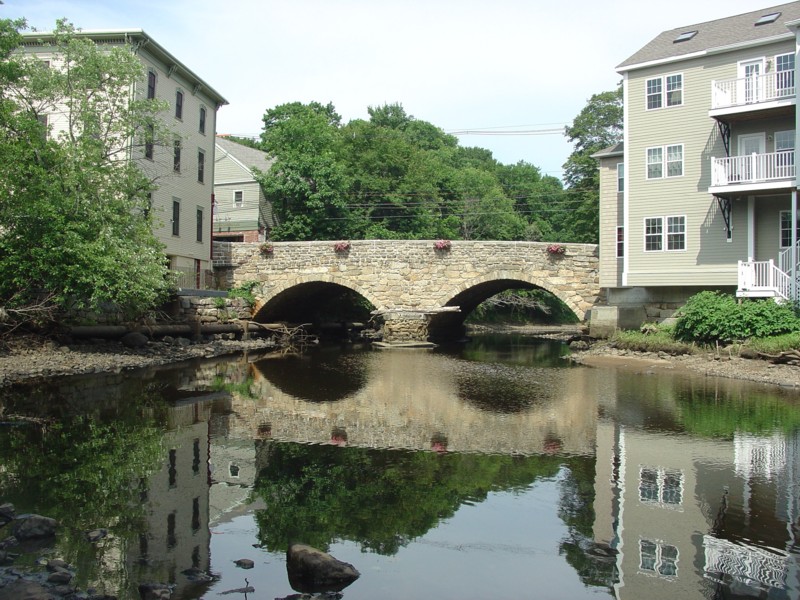 |
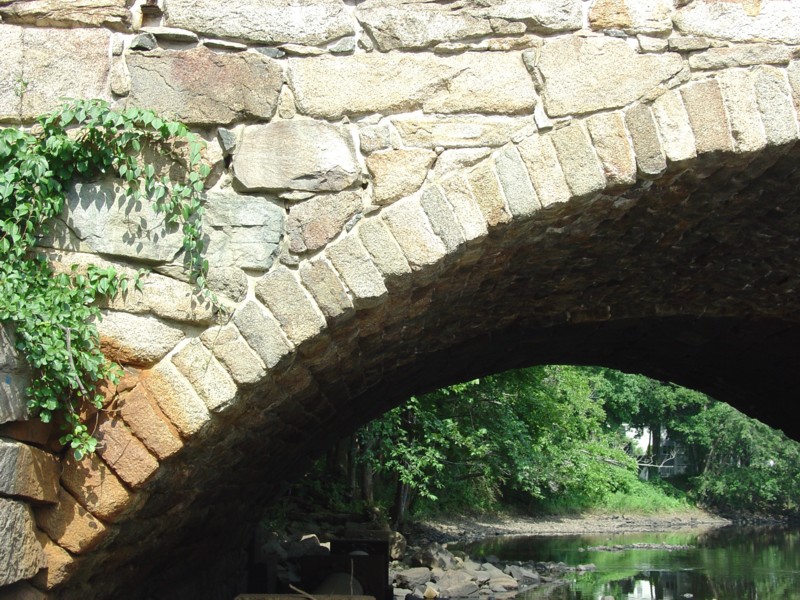 |
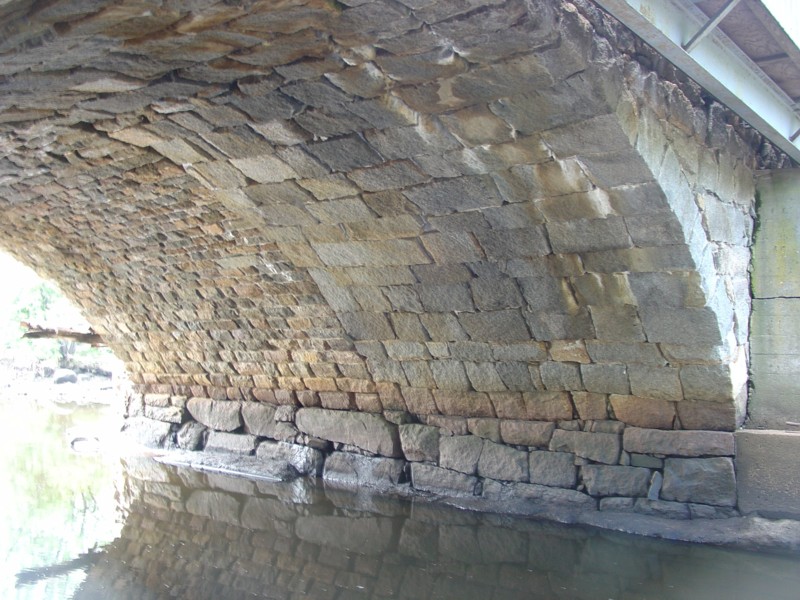 |
The 1764 section of the bridge is on the left, 1838 section is on the right.
There is a noticeable difference in size of the stones.
 |
The arch of the 1764 section.

The stones of the 1764 section were laborious shaped into block by using mason’s hammers.
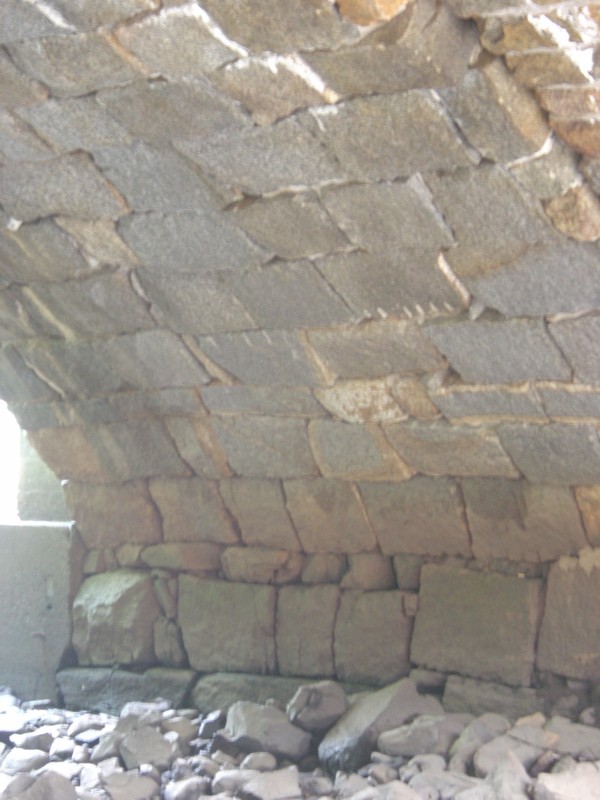 |
The stones of the 1838 section were shaped into blocks by splitting them with the plug and feather method.
Small arched bridge connecting Arlington and Lexington, MA
On an abandoned dirt road, this quaint little bridge now serves walkers around a town reservoir. Years ago it connected the outskirts of two adjoining towns. Its arch is formed by using trapezoid shaped blocks. Roughly shaped fieldstone boulders were faced off for a finished look to outside surface of abutments and road base above bridge. It is the only example in this collection with mortar to keep the stones in place.
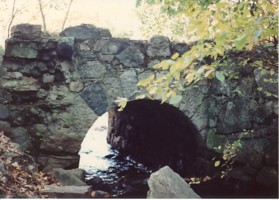 |
Jewel Mill Arched Bridge - next to Route 1, Rowley, MA (Privately Owned)
The bridge once served an active and busy grist mill. It connected the mill with Newburyport Turnpike (now Route 1). It was built in 1860-61. The arch was built of quarried bars. The first three levels of stone are 1- graduated, 2- larger than rest of arch stones. Curve for arch was formed by placing stone wedges at back of bars to tilt bar into correct angle. Bridge was angled across path of road following the path of the Little River. Note at top of arch builders had a slight problem. Instead of a key stone there are two filler stones, one on top of the other. Abutments were constructed of split and unsplit field boulders. Outer surface was left with an unfinished look. Massachusetts Highway Bridge Inventory Report (PDF).
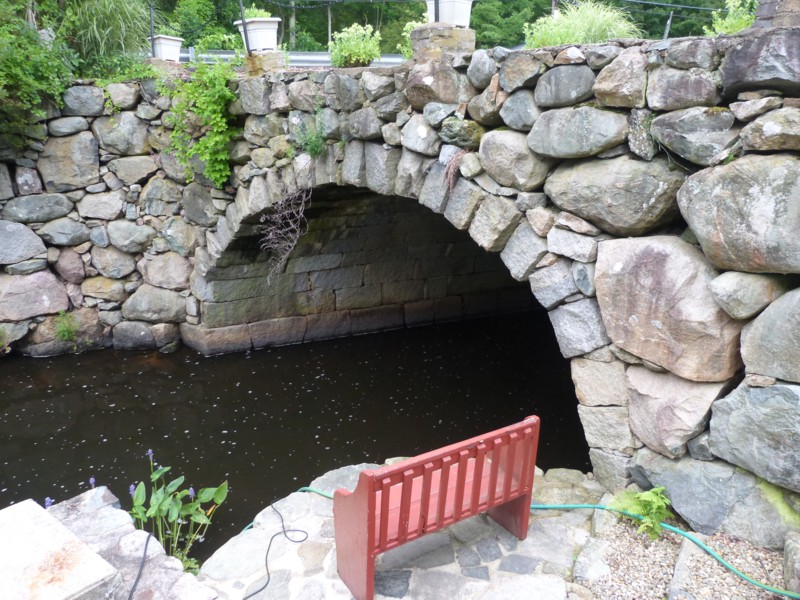 |
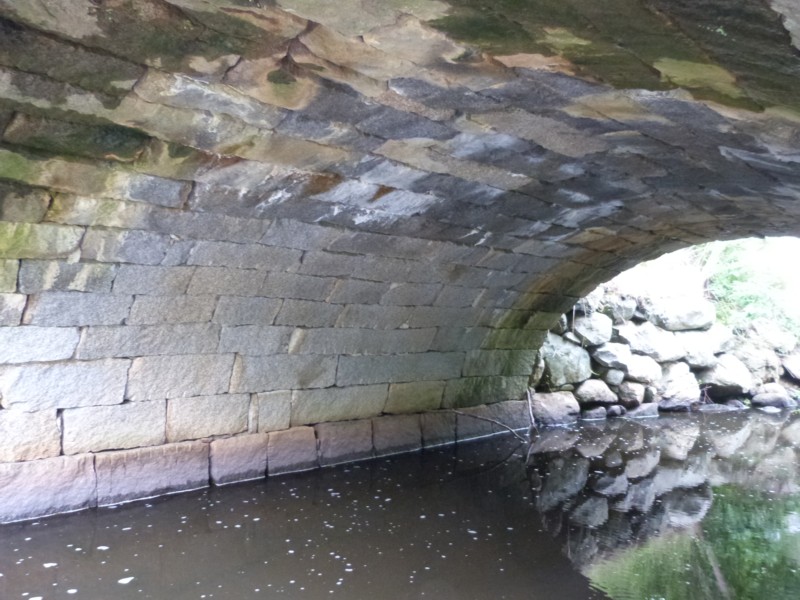 |
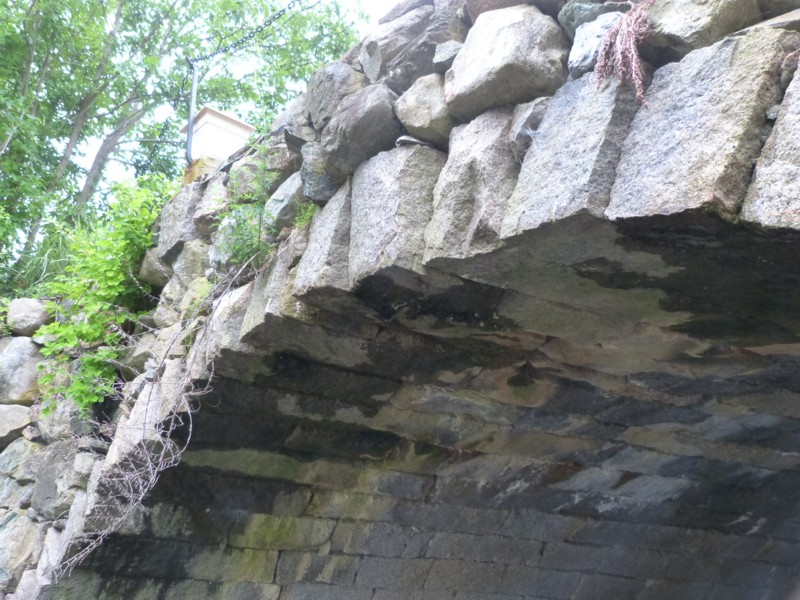 |
Contoocook River Valley style stone arch bridge - southwestern New Hampshire
According to signage twin arches were the favored style for the river valley. They were built during the first half of the nineteenth century. The bridge pictured here has a semi-faced off finish on outer surface of abutments. To keep wagons and animals from falling off edges, thin iron posts and a single rail were erected along length of bridge. Remnants of this early guard rail are still there.
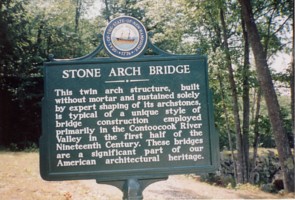 |
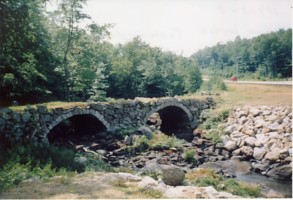 |
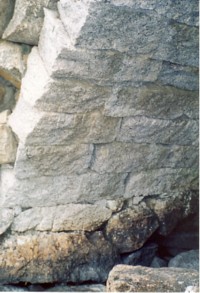 |
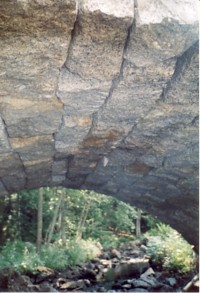 |
